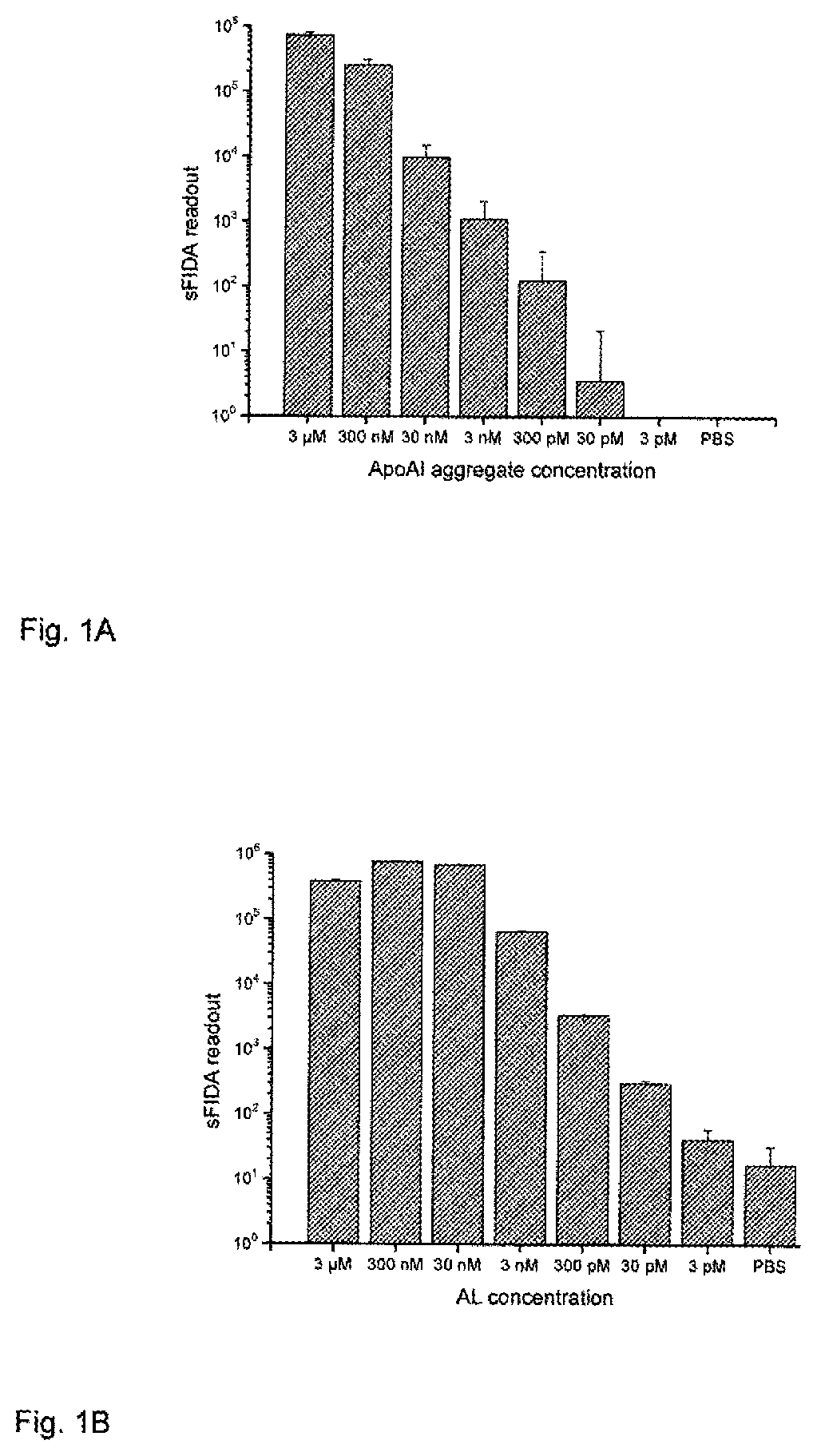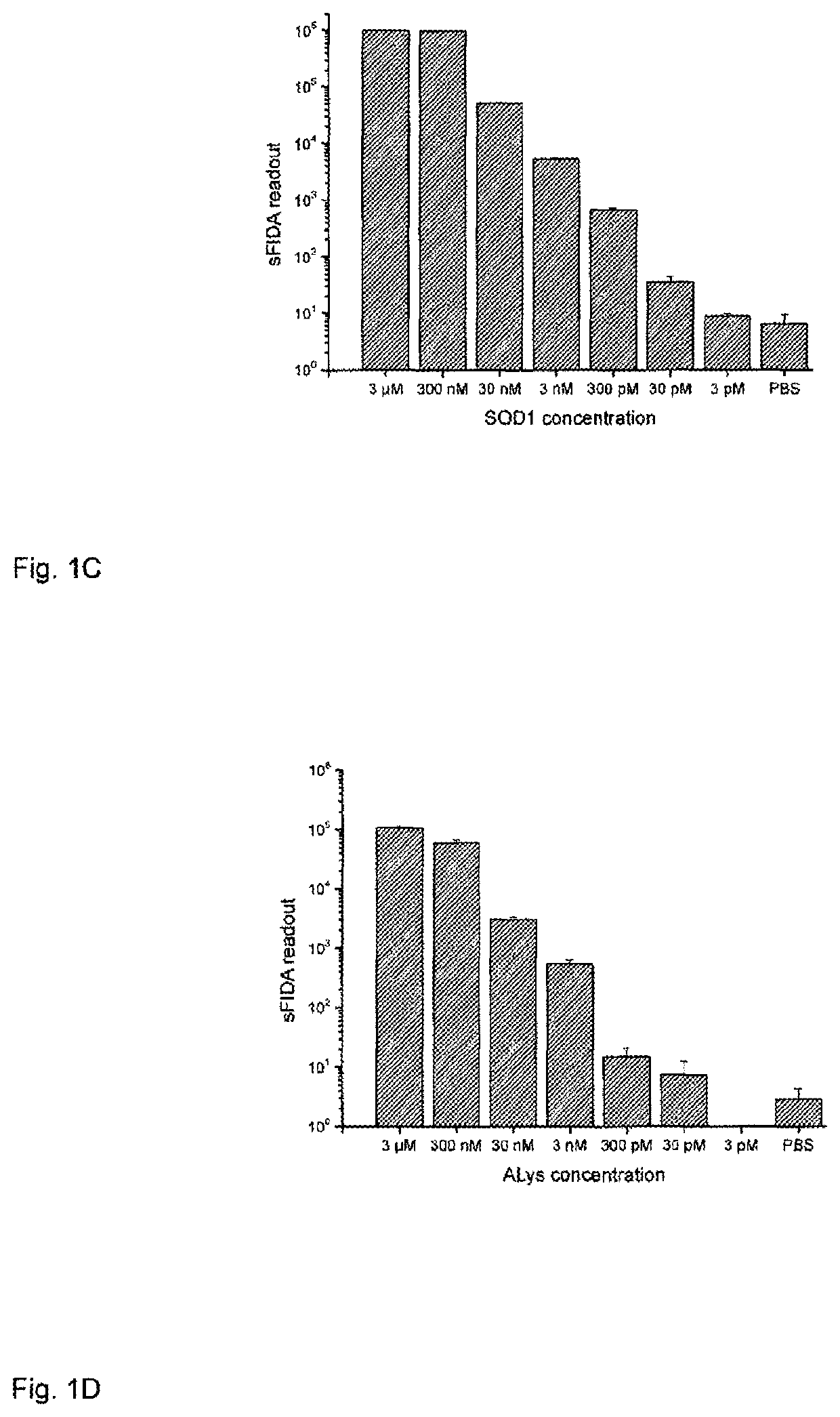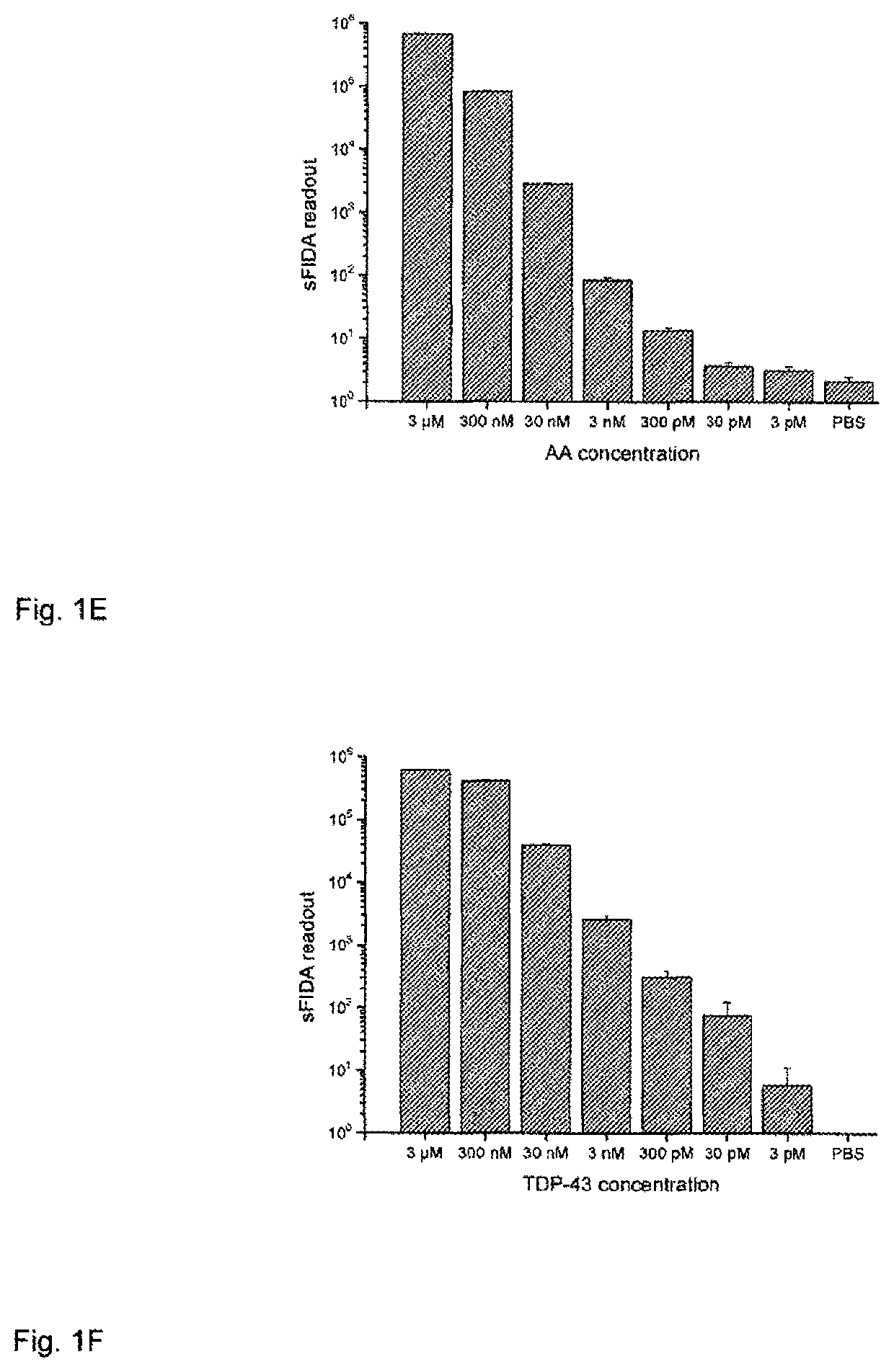Method for detecting indicators for determining diseases
a technology for detecting indicators and diseases, applied in the field of methods for detecting indicators for determining diseases, can solve the problems of lack of knowledge of the biological basis of mental diseases, poor prognosis of attr amyloidosis, lack of blood or csf-based diagnostic tests, etc., and achieves the effect of increasing the specificity of the signal, increasing the number of data points, and increasing the temporal and spatial resolution
- Summary
- Abstract
- Description
- Claims
- Application Information
AI Technical Summary
Benefits of technology
Problems solved by technology
Method used
Image
Examples
examples
[0486]1. Materials and Methods
[0487]In the assay, multiwell plates with a 170 μm thick glass bottom were used as sample carriers (SensoPlate Plus 384 Greiner Bio-One, Kremsmünster, Austria). All reagents and solutions used were obtained with the highest degree of purity and sterilized until particle-free prior to use.
[0488]In the first step, each sample chamber (well) was filled with 100 μL sodium hydroxide solution (5 M), incubated for 15 minutes at room temperature, rinsed three times with water, mixed with 100 μL hydrochloric acid and again incubated for 15 minutes at room temperature. After washing thee times with water and twice with ethanol, the wells were dried under a nitrogen atmosphere.
[0489]In order to produce amino groups on the glass surface, 20 μL of ethanolamine (5.6 M) was placed in each of the wells and incubated overnight at room temperature. The wells were washed three times with DMSO, twice with ethanol, and dried under a nitrogen atmosphere.
[0490]Heterobiofuncti...
PUM
| Property | Measurement | Unit |
|---|---|---|
| concentration | aaaaa | aaaaa |
| concentration | aaaaa | aaaaa |
| temperature | aaaaa | aaaaa |
Abstract
Description
Claims
Application Information
 Login to View More
Login to View More - R&D
- Intellectual Property
- Life Sciences
- Materials
- Tech Scout
- Unparalleled Data Quality
- Higher Quality Content
- 60% Fewer Hallucinations
Browse by: Latest US Patents, China's latest patents, Technical Efficacy Thesaurus, Application Domain, Technology Topic, Popular Technical Reports.
© 2025 PatSnap. All rights reserved.Legal|Privacy policy|Modern Slavery Act Transparency Statement|Sitemap|About US| Contact US: help@patsnap.com



